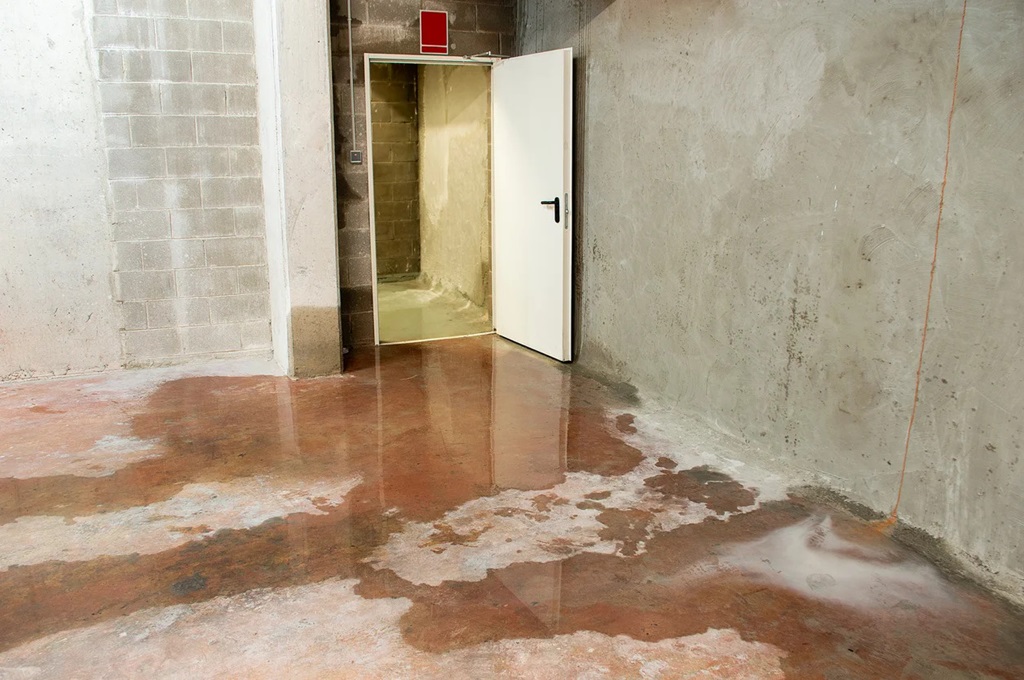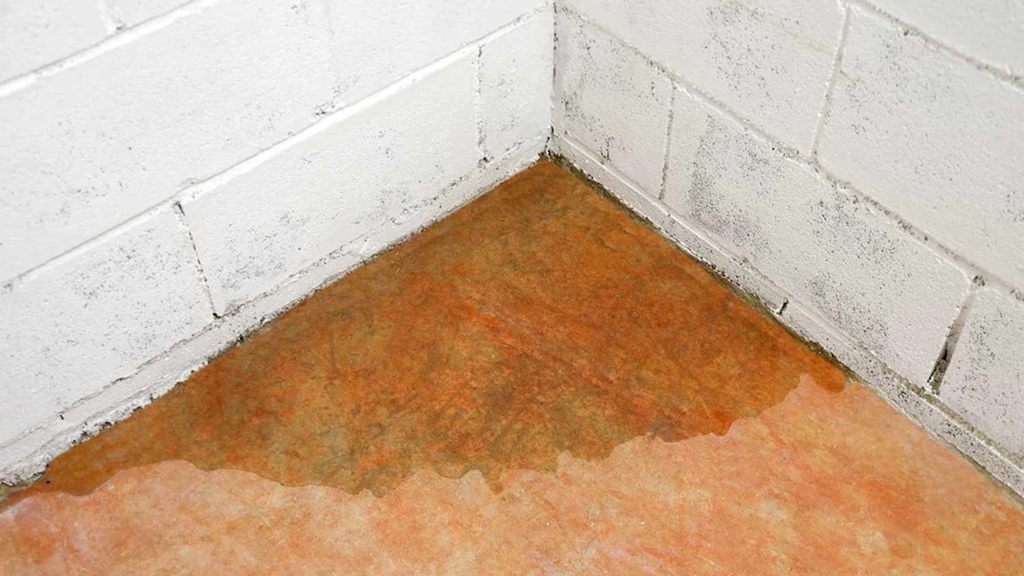Discovering water coming up from the floor of your home can be a troubling experience. It is natural to have a multitude of questions in your mind, such as the cause of the issue, the severity of the problem, and the best way to address it. That’s why we have put together this comprehensive guide to help you gain a better understanding of the reasons why is water coming up through the floor and the necessary steps to take to resolve the issue. By the end of this guide, you should have a clear understanding of what you can do to fix this problem in a safe and effective manner.
What Causes Water to Come Through the Floor?
There are several potential sources of water intrusion from below the floor:
High Water Table
If the water table (the level at which the ground is saturated with water) is unusually high around your home, it can cause water to rise up through cracks and permeate the floor. A high water table is most common after long periods of heavy rain or rapid snowmelt.
Plumbing Leaks
Leaks from supply lines or drain pipes in walls or under floors are a common culprit. This includes leaks in water lines, sewer lines, or overflowing fixtures. Water will spread out beneath the floor along the path of least resistance.
Groundwater Seepage
Water seeping from the ground itself is another possibility. This can occur when the soil around and under your home becomes saturated. It is more common in low-lying areas with a high water table.
Foundation Cracks
Cracks or holes in the foundation walls or floor slab can provide an entry point for water in the surrounding soil to penetrate into the home. This may indicate a larger structural issue.
Flooding
If you live in a flood zone, flood waters can sometimes come up through cracks and openings in the floor. This usually occurs because of major weather events, not routine flooding.
Signs of Water Intrusion Under the Floor
Watch for these common signs that may indicate water is entering from below:
- Visible water droplets or pooling water on the floor surface
- Bubbling up between floorboards or tiles
- A “spongy” feel underfoot in carpeted areas
- Warping, swelling, discoloration, or mold on floor materials
- A musty, damp smell coming from the floor
- Creaking noises when walking across affected areas
The severity depends on the amount and cause of water. Occasional minor dampness from condensation is less concerning than a plumbing leak or flood water rising under the home.
How to Diagnose the Source
Finding the exact location and cause of water coming up through the floor is crucial for proper repairs.
Here are some diagnostic steps:
Inspect Both Sides of the Affected Floor Area
Check above and below the flooring for any visible signs of moisture or water stains. This includes the basement or crawlspace underneath. Leaks may be traced back to their source this way.
Consider Recent Weather or Events
Has there been heavy, prolonged rains or rapid snow melting recently? Are you in a known flood zone? Heed high water table warnings. This can help rule in or out groundwater as the cause.
Look For Plumbing Issues
Inspect water and sewers under and around the affected floor. Look for corrosion, cracks, clogs, leaks, or overflowing fixtures. Ask yourself if any appliances have been leaking.
Check the Foundation
Inspect the foundation walls and floors in the basement or crawlspace below for cracks, holes, or structural damage that could allow water in. Signs include cracks, crumbling, or shifting.
Measure Moisture Levels
Use a moisture meter on floor materials to map out the extent of dampness. This can aid in pinpointing the moisture source. Drier areas are likely farther from the origin.
Consider Hiring a Professional
For difficult cases with no apparent cause, it may be wise to hire a foundation repair contractor, plumber, or home inspector. They have specialized tools and knowledge to diagnose tricky water intrusion issues.
What To Do About Water Coming Through the Floor
Once the source is determined, swift action is needed to remedy the problem:
Address Plumbing Leaks Promptly
If leaky plumbing is to blame, identify and repair the specific leak source right away. Prevent further water damage by turning off water to the affected lines until they can be repaired.
Fix Structural Issues
Foundation cracks, sinking, or holes should be addressed to prevent groundwater from seeping in. Products like hydraulic cement or foundation sealants can help seal openings. Or, larger repairs may be needed.
Install a Sump Pump System
For homes prone to groundwater, installing an interior or exterior sump pump and drainage system helps keep water away from the foundation. Proper grading also helps direct water away.
Dry Out Affected Areas
Use dehumidifiers, fans, and open windows to encourage ventilation and drying of damp floor materials. Remove any soaked carpets, padding, or tile, and thoroughly dry the subfloors.
Check for Mold Growth
Be alert to any moldy smell or visible mold growth. Stopping water intrusion prevents further mold. However, any existing mold should be cleaned and filled with products such as borax, vinegar, or bleach.
Consider Raising Utilities
In flood-prone homes, furnaces, water heaters, and electrical can be elevated on platforms to protect them if water intrudes through the floor.
Weigh Preventative Measures
For frequent flooding, additional steps like sealing the foundation, installing backflow valves, grading landscaping to direct drainage away, or ultimately elevating the home may be worth considering.
Stopping active leaks and water intrusion is the vital first step. But repairs don’t always end. Any structural issues leading to cracks or openings still need to be addressed, and damaged flooring or interior finishes will likely need replacing. Ongoing prevention is key to avoid water coming up through the floor repeatedly.
In Conclusion
Discovering water intrusion coming from underneath your flooring can be worrisome. However, understanding the common causes, carefully diagnosing the exact source of the issue, and taking the right steps to fix current damage and prevent future leaks will help resolve the problem. Swift action is key to avoiding larger repairs. Seek professional help if the underlying cause is unclear. Addressing water penetration early improves the chances of preserving your flooring and avoiding secondary moisture damage in the long run.
FAQs
1. Is water coming up through the floor a serious problem?
Water intrusion from below can lead to structural damage, mold growth, ruined flooring and possessions, and even health concerns. So it merits prompt attention. The seriousness depends on factors like the amount and cause of water, and how long it went unaddressed.
2. How can I tell if the water source is my plumbing vs groundwater?
Signs of a plumbing leak include water originating near bathroom/kitchen fixtures, accompanied by drips from ceilings or walls. Groundwater is more likely if water seems evenly dispersed during wet seasons or in flood zones. If uncertain, professionals can help diagnose.
3. What should I do if water is seeping through foundation cracks?
First, be sure the exterior foundation is fully exposed to allow inspection. Consult a foundation repair company – hydraulic cement products or sealants can help seal cracks and prevent water seeping in from surrounding soil through the foundation.
4. Does the homeowner’s insurance cover water damage through the floor?
It depends. Insurance policies may cover flooding from weather events or groundwater, while they often exclude “continuous” seepage over time. Additionally, damage from appliance leaks, burst pipes, and other similar incidents that are under your control is generally excluded from coverage. Check your policy or ask an agent.
5. How can I prevent water from coming up in the future?
Depending on the cause, solutions include sealing the foundation, improving perimeter drainage, repairing plumbing, installing protective systems like a sump pump, addressing structural issues, or in severe cases, elevating the home if flooding is frequent. Prevention starts by fixing the source.







